Turn your cooking station into a professional Japanese kitchen! These tools will help you simplify Japanese cooking and turn your food into restaurant quality dishes!

Known as one of the world’s best cuisines, Japanese food has quickly become a favorite among foodies and chefs. It seems that almost every week a new ramen joint or sushi spot is opening, with izakayas also gaining popularity, mochi ice cream popping up everywhere, and matcha flavored drinks and desserts becoming a normal thing.
This makes me really happy because I live for Japanese food. I’m glad to see that the rest of the world is catching on to this delicious cuisine and I love the fact that you, my readers, are so opened to trying new flavors and textures. You are the reason why I get up in the morning and look forward to create new recipes and, hopefully, introduce you to new dishes. So thank you for your constant support, I’m forever grateful ❤️.
Lately I’ve been getting a lot of questions about the type of equipment I use in my own kitchen. I often forget to mention the tools you see in my pictures so I thought it would be fun to create a post listing all of them, and tell you why I love them so much. So here are 19 of my favorite essential and fun kitchen tools for mastering Japanese cooking. Don’t hesitate to leave me a comment if you have any questions about these products.
Rice Cooker
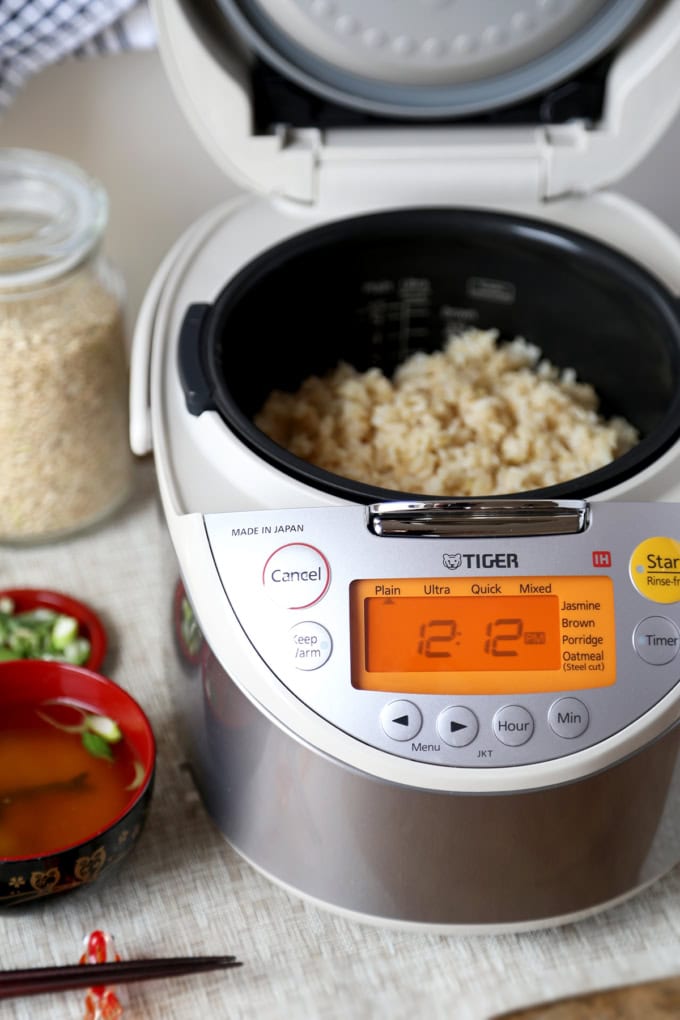
It’s impossible to serve a delicious Japanese meal when the rice isn’t up to par. Since rice is a staple in Japanese cooking, it comes as no surprise that they expect the best to be served at every meal.
You may think that owning a rice cooker isn’t an essential thing but I can assure you that every household in Japan has one. Why? Because nothing makes rice as good and as perfect as a rice cooker. Sure, you can make rice in a pot on a stove top but it won’t come out anywhere as good as if you pressed the start button on a rice cooker and let it do its magic.
Another plus to owning a rice cooker these days is that most of them offer several other features – they come with a slow cook function, can steam cakes and breads, can make porridge and oatmeal, and can cook other grains such as quinoa, farro, and wheat berries. It’s a phenomenal tool to have in your kitchen that I personally couldn’t live without. Rice cookers come with a rice paddle so you don’t have to buy one separately. SHOP FOR A RICE COOKER
Rice Washing Bowl

A rice washing bowl is a must if you make a lot of rice. It saves time and makes rinsing and polishing rice quick and easy!
Equipped with tiny holes at the bottom, the rice washing bowl can drain the cloudy water while keeping the rice from falling through the holes. SHOP FOR A RICE WASHING BOWL
Sushi Oke (Hangiri – Sushi Rice Tub)
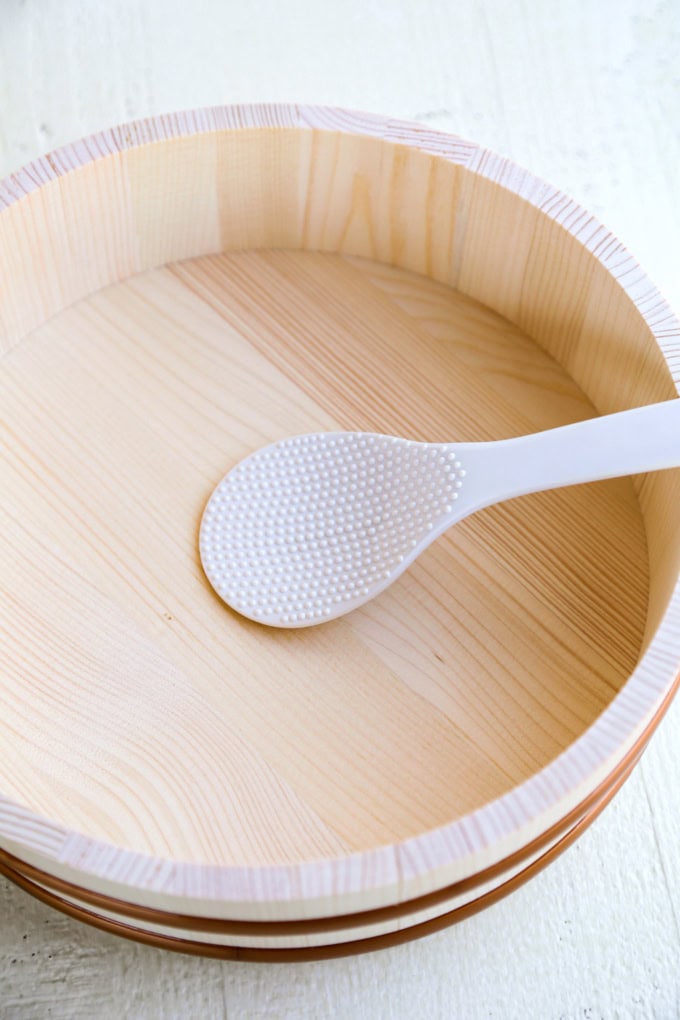
A hangiri is a tool used to mix Japanese rice with vinegar seasoning to make sushi rice. The rice is used to make chirashi sushi, nigiri sushi, maki sushi, temaki sushi, and nigiri sushi.
The tub which is made of white wood absorbs the excess water to keep the rice perfectly moist as well as preventing it from drying. SHOP FOR SUSHI OKE
Rolling Mat
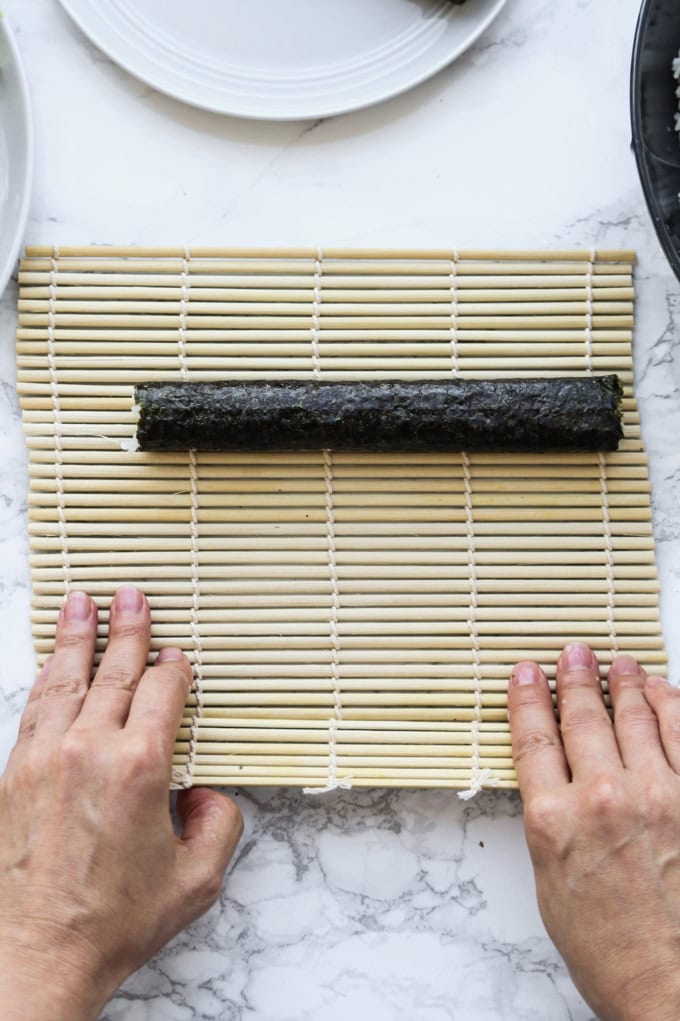
You will need a rolling mat to make sushi rolls.
Rolling mats are made of bamboo and make it easy to tightly roll the rice and other ingredients into perfect maki sushi. They are very affordable and also easy to clean and store. SHOP FOR BAMBOO ROLLING MAT
Long Cooking Chopsticks
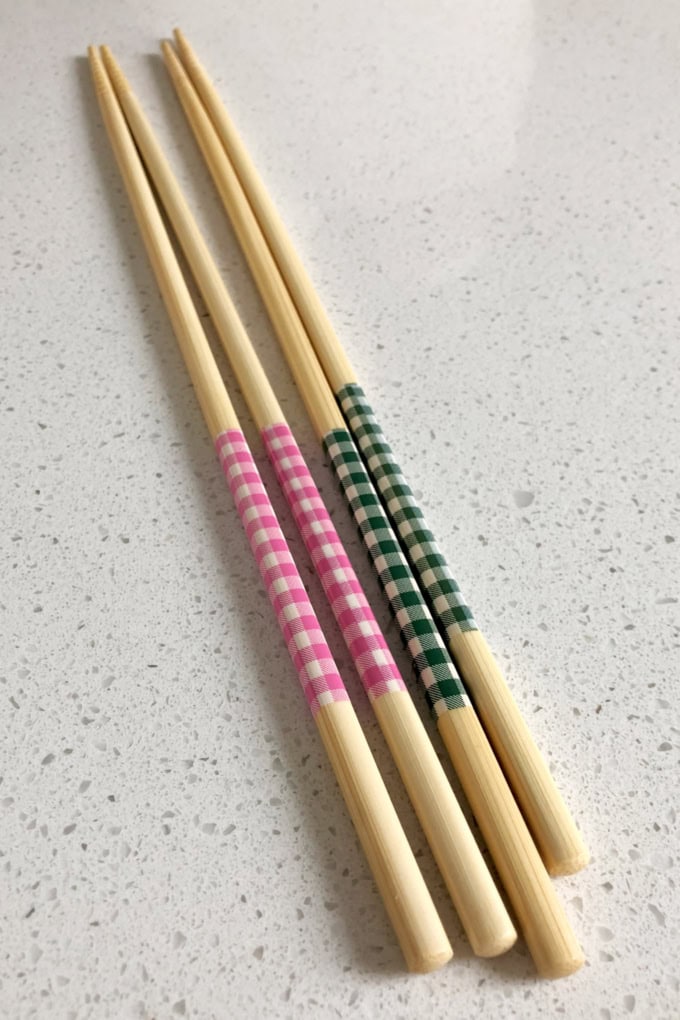
Once you start eating and cooking with chopsticks there is no going back.
Chopsticks do a fantastic job at grabbing a string of noodle to test its doneness, whisking eggs, creating zig zag patterns for egg drop soup, flipping sausages in a pan, deep frying tempura in oil, stir frying, you name it. Long chopsticks are great for cooking because your hands are further away from the heat source, making them safer to use. SHOP FOR LONG COOKING CHOPSTICKS
Noodle Strainer
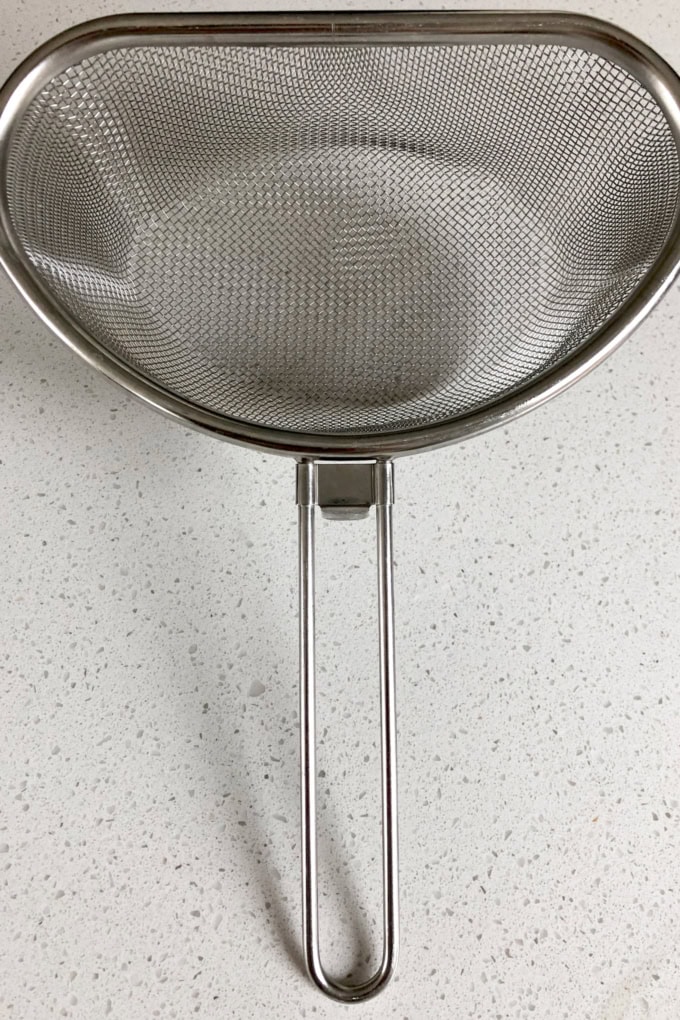
Noodle strainers are so useful when you are cooking more than one serving at a time!
Whenever I make ramen for Ben and I, I put one serving of noodles in a pot and the other in this noodle strainer, which hooks to the inside of the pot. This way I can boil two servings at once and not worry about dividing the noodles equally afterward. SHOP FOR A NOODLE STRAINER
Japanese Grater
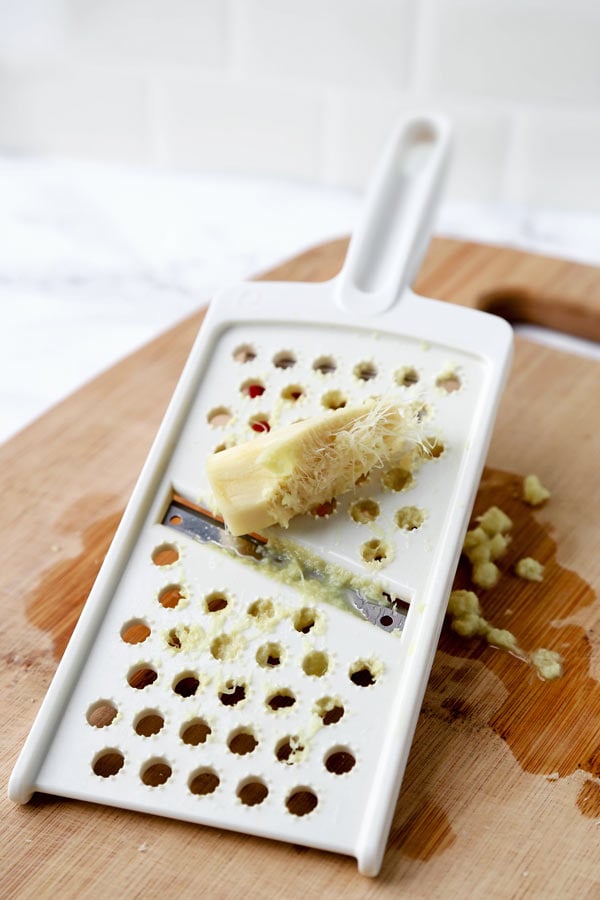
I love my Japanese grater so much that I can’t remember the last time I used my other regular one.
The one pictured above is specifically made for daikon but I use it for so much more! It does such a great job at grating vegetables such as daikon, ginger, garlic, and onion. If I’m looking to grate something and want it to be almost mushy instead of crunchy, this is the tool I use. I even use it to grate apples whenever I make curry since I want the sweet flavor but not the texture. It’s the best! SHOP FOR A JAPANESE GRATER
Sesame Seed Grinder
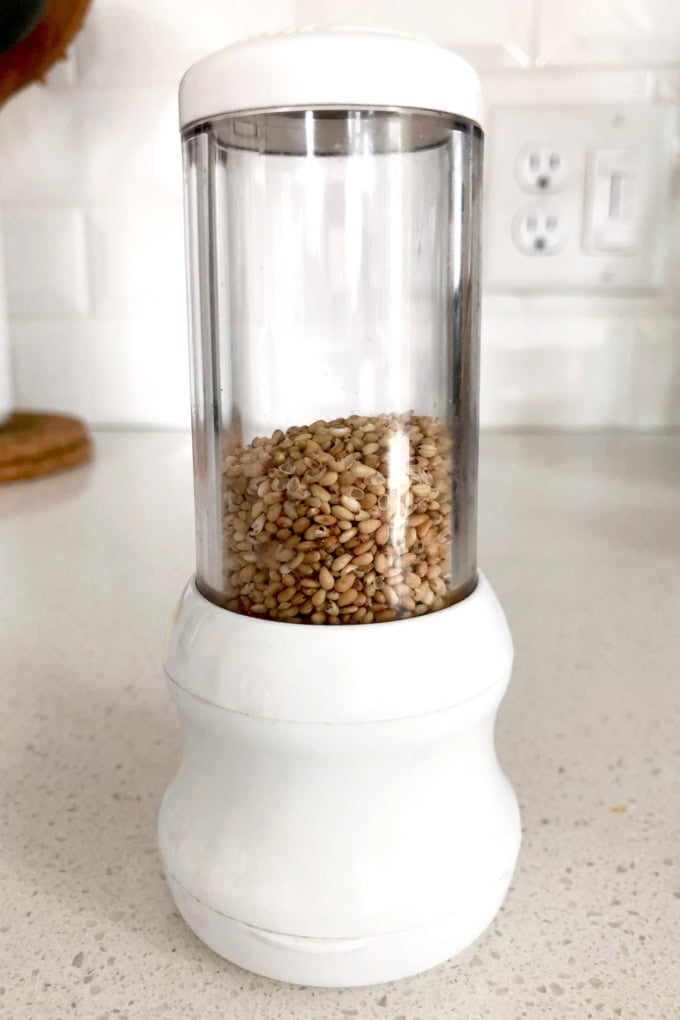
Sesame seeds are packed with goodness!
They are so nutritious to the body but you can only reap the benefits if the seeds are ground. The traditional Japanese way of grinding seeds is to use a pestle and mortar, but there is another tool that’s much easier to use – a grinder. I bought mine in Japan and use it all the time to add a little nuttiness to ramen, soba, salads, and soups. All you need to do is add sesame seeds to the body of the grinder and start twisting! SHOP FOR A SESAME SEED GRINDER
Miso Soup Strainer
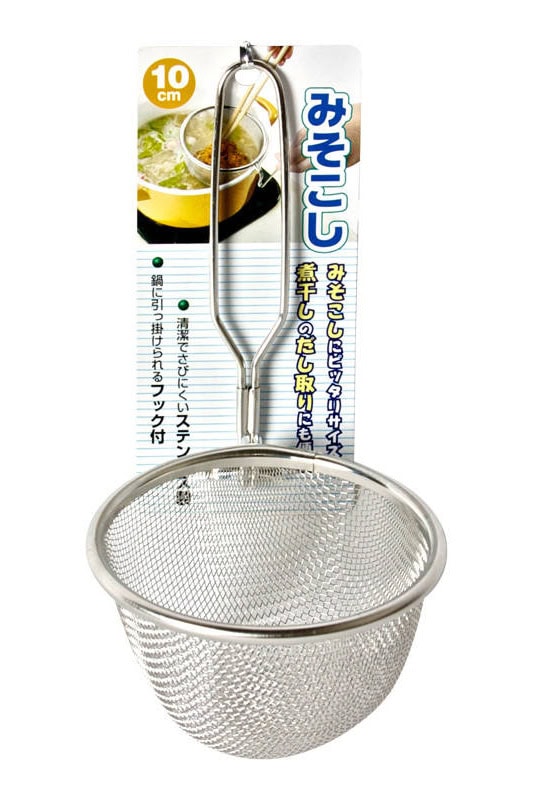
If you are a big fan of miso soup like I am you will love this little strainer. To make delicious miso soup you must add the paste last and stir it through a sieve to remove the bumpy and grainy bits. You can use a regular strainer to do that but I like that this one is small enough to fit into my smallest pot. SHOP FOR A MISO SOUP STRAINER
Rice Bowls
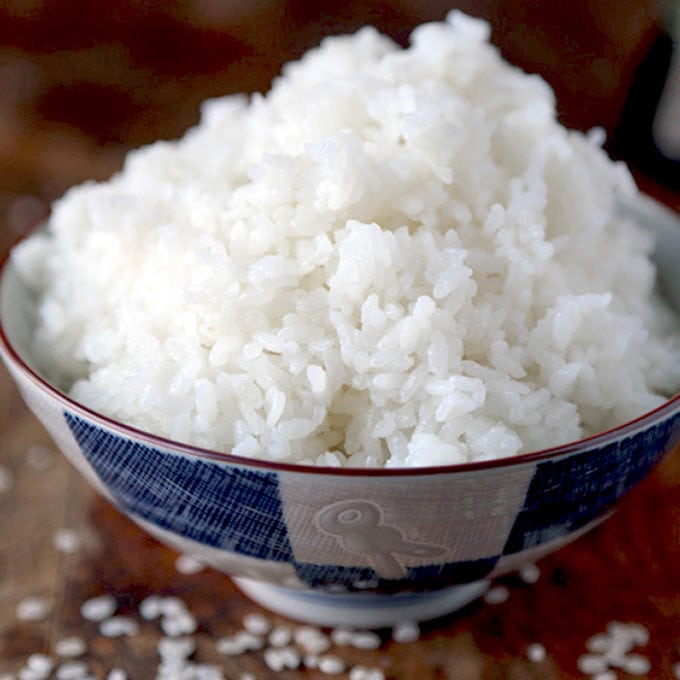
Yes, you could use any type of bowl to eat Japanese rice but what makes rice bowls special are their size.
The bowls are made to accommodate a serving of cooked rice which comes to about 3/4 cup. They are good to keep track of calorie count and serving sizes, and the fact that the top part of the bowl is wider than the bottom makes it easier to grab the rice with chopsticks. Plus, they are so much prettier than your average bowl! SHOP FOR RICE BOWLS
Ramen Bowls

I’ve had ramen in soup bowls and plastic Chinese bowls, but nothing beats a proper ramen bowl to enjoy this iconic Japanese dish.
That’s because soup bowls are too small and too shallow to handle a full serving of ramen and plastic Chinese bowls get too hot to the touch. There’s something about the way ramen bowls are shaped that make them the perfect vehicle for noodle soups. Their tall conic shape keep the soup hot for longer and leave just enough room to add plenty of toppings. SHOP FOR RAMEN BOWLS
Porcelain Soup Spoons
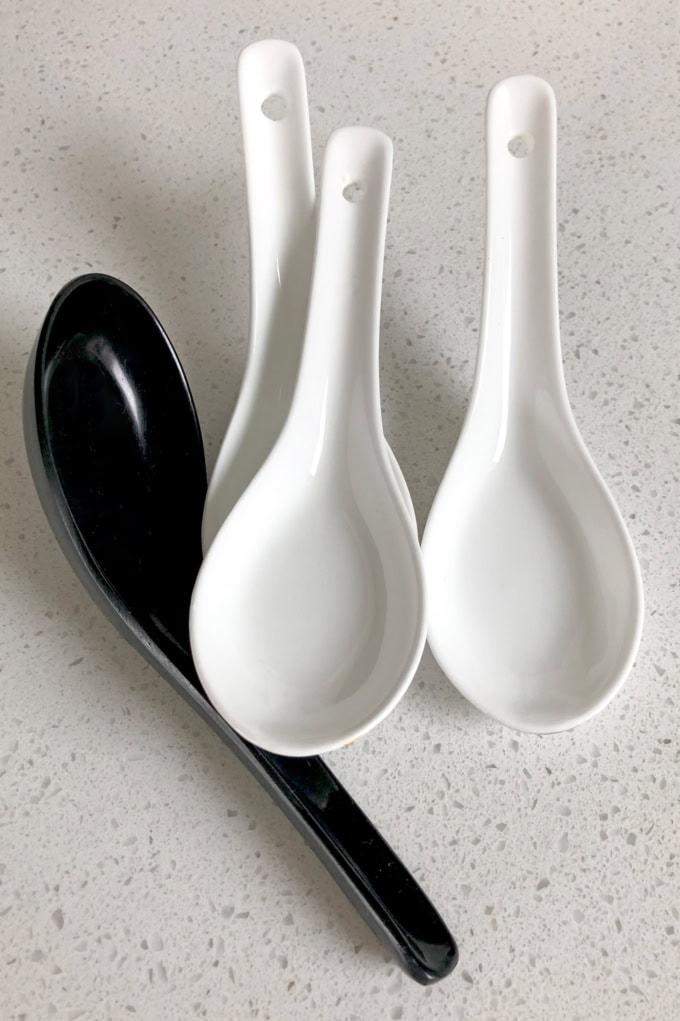
I’m really picky when it comes to spoons. Ask Ben and he will tell you that I’ve sent him back to the kitchen if I’ve been served the wrong spoon to go with my meal (but other than I’m a really nice girl!).
I like a teeny tiny spoon for pudding, a regular small spoon for oatmeal and cereal, a big long spoon for bibimbap, and porcelain soup spoons or ladle hot pot spoons for ramen. With porcelain soup spoons I can scoop up plenty of broth and add toppings to it (I never put noodles in my spoon as I like to slurp them the traditional Japanese way). They are also good to hold dumplings and are less messy than regular spoon (less dripping involved). SHOP FOR PORCELAIN SOUP SPOONS
Chopsticks Rest
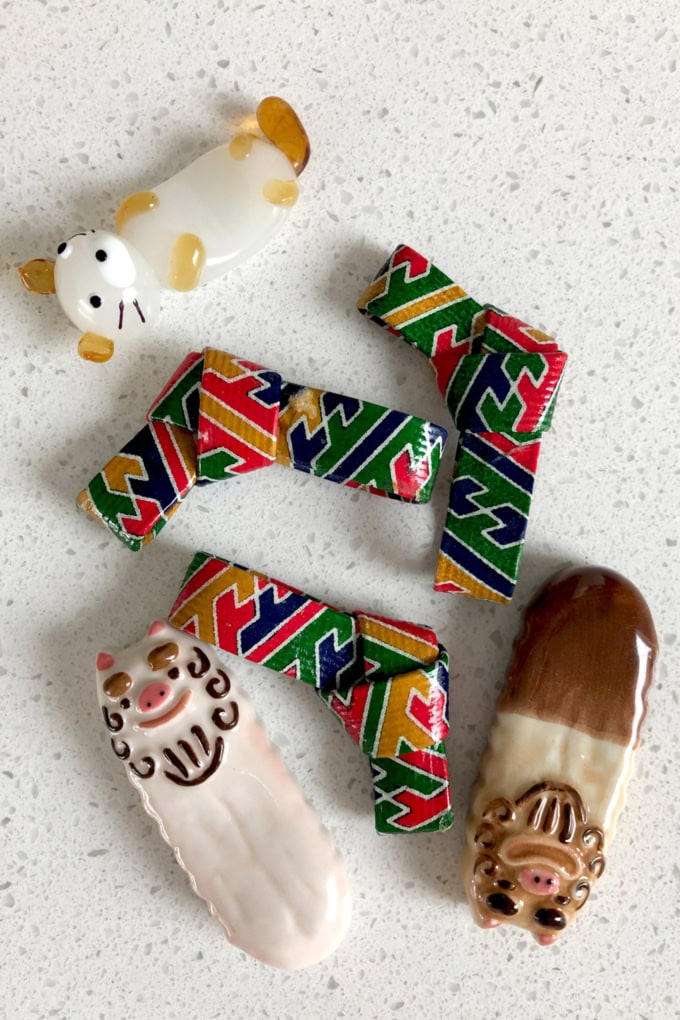
Chopstick rests are essential to a traditional Japanese table setting (the bows were handmade by aunt and the porcelain ones are from Okinawa, representing their gods).
It’s considered bad luck to stick your chopsticks in rice, bad manners to leave them crossed on top of each other (or to rub them together for that matter), and childish to play with them. Using a chopstick rest is the easiest and safest way to stay out of trouble when eating with chopsticks. SHOP FOR CHOPSTICK REST
Dipping Bowls
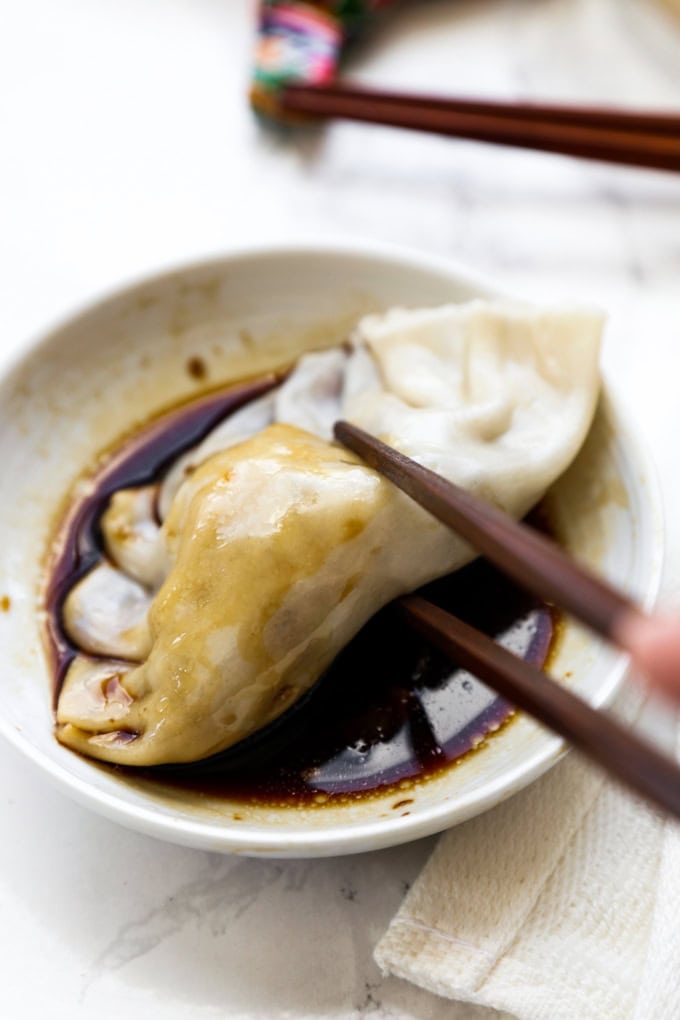
There’s a lot of dipping that’s involved with a Japanese meal since it’s usually comprised of various small dishes.
Japanese cuisine uses different sauces to pair with individual dishes to keep the dining experience fun and interesting, so it’s always a good idea to have a selection of small bowls and dipping bowls available in your cupboard. SHOP FOR DIPPING BOWLS
Fun Japanese Cooking Tools that Are Also Very Useful (And Make Great Gifts!)
Onigiri Mold
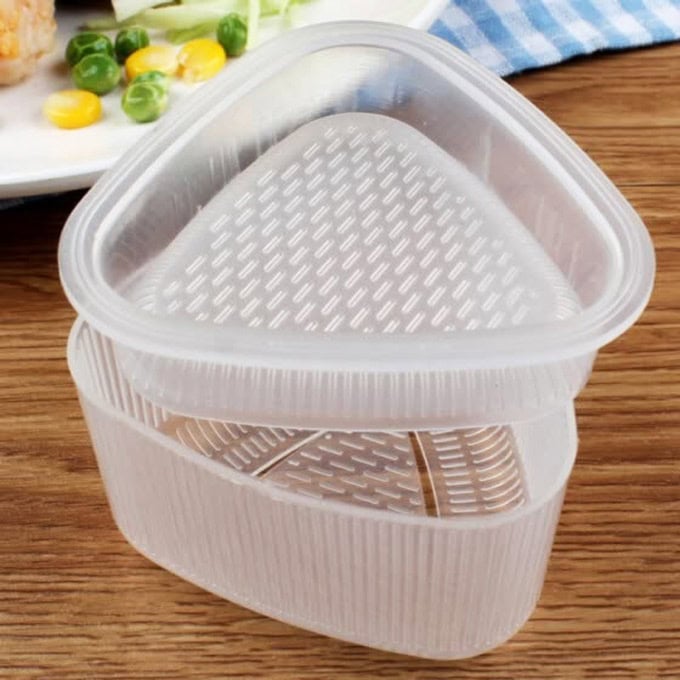
I have a confession to make – I own an onigiri mold.
I bought it a long time ago in Japan because I thought “hey, why not make my life easier!” I don’t use it all the time but I will take it out if I quickly want to whip up some onigiri as part of a Japanese dinner. It’s a time saver, easy to use and also kind of fun! SHOP FOR ONIGIRI MOLD
Sushi Rolling Kit
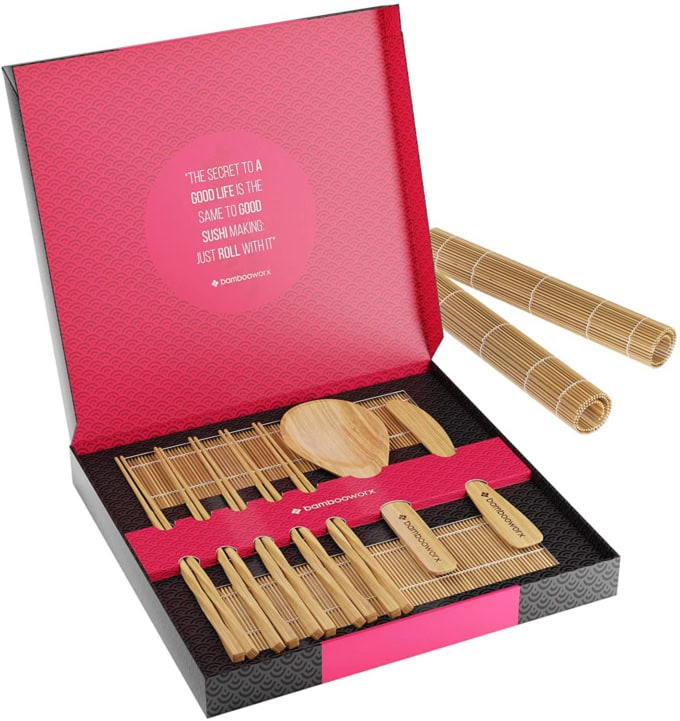
A sushi making kit is always a fun gift to give to someone who’s really into Japanese food. They come in a pretty box and include bamboo mats, chopsticks, a rice paddle, and other items depending on how elaborate the kit is. SHOP FOR A SUSHI ROLLING KIT
Tofu Press

Tofu holds a lot of water and can water down sauces during the cooking process, especially if it hasn’t had time to drain properly. This is a fun gift to give to tofu lovers as it does a great job at pressing out water, is small enough to fit in a drawer, and can also be used to pickle vegetables. SHOP FOR A TOFU PRESS
Taiyaki Pan
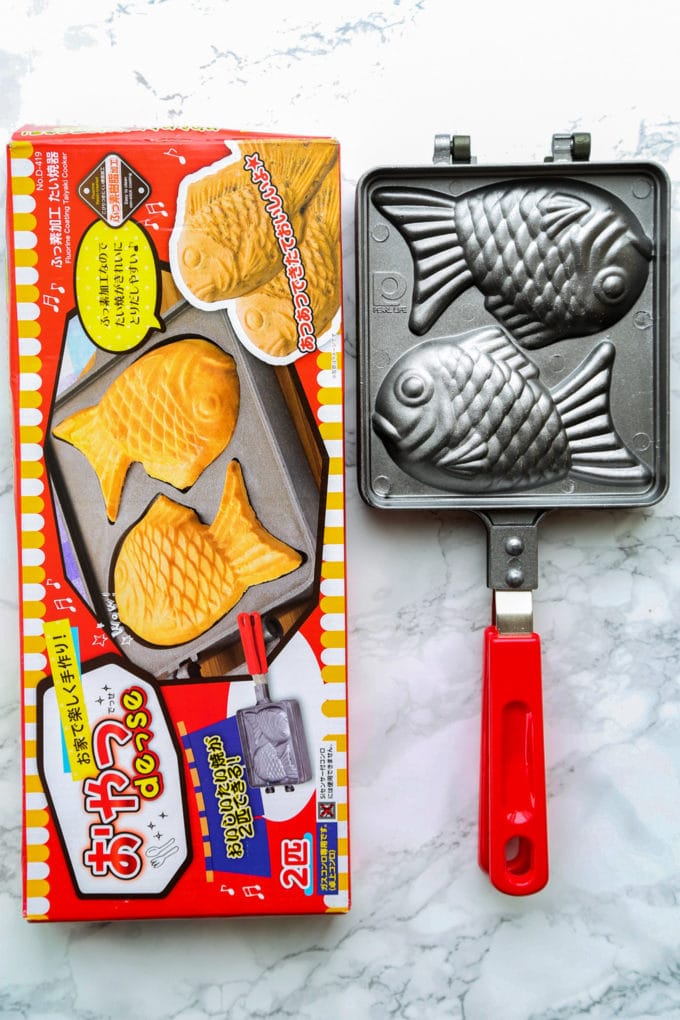
This is a fun gift to give to parents who enjoy cooking with their kids!
Tayaiki is a traditional Japanese snack made of pancake batter that’s cooked in a fish shaped mold and stuffed with anko (sweet red bean paste) or other fillings such as Nutella or custard. It’s easy to make (check out my recipe for taiyaki) and absolutely delicious. SHOP FOR TAIYAKI PAN
Takoyaki Pan
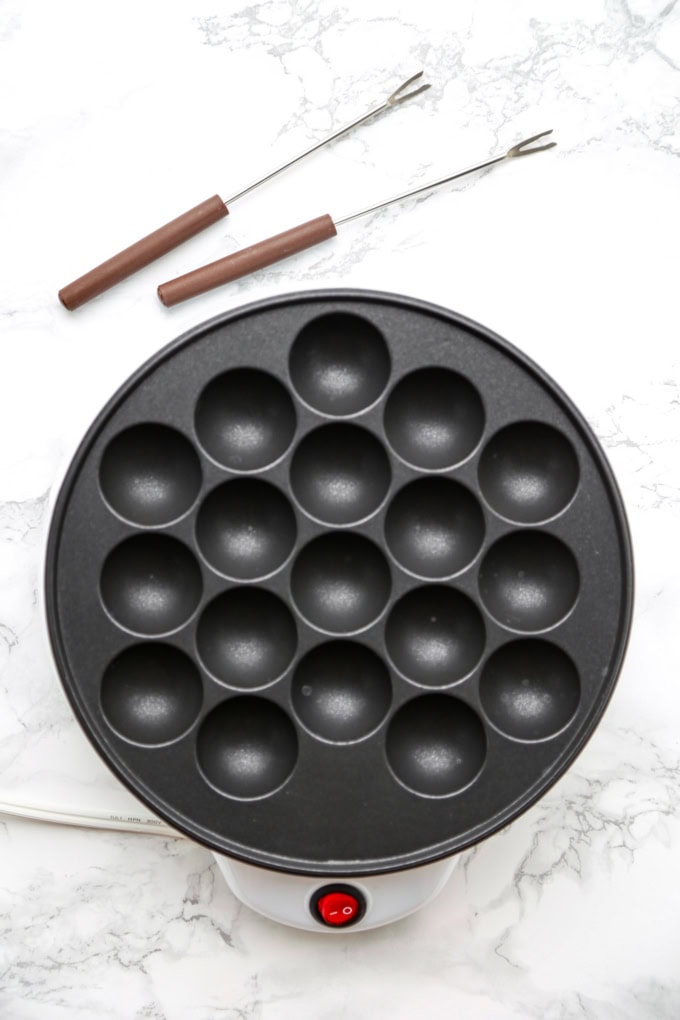
Takoyaki are round shaped balls made of whole wheat batter stuffed with chopped octopus and topped with tonkatsu sauce and mayonnaise.
It’s a popular summer snack that can be found all over Japan at festivals, yatais (mobile food stalls), and specialized takoyaki stands. You can get a takoyaki pan that heats over a stove top, or one that’s electric and heats on its own (that’s the one I have and it’s the bomb!) SHOP FOR TAKOYAKI PAN















Thanks so much for this list. It’s super helpful. I will check it out..
Hello Caroline, I’ve been trying to find those little glass prep bowls I see on Japanese cooking videos, the ones you would use to put spices and small amounts of other ingredients ready to add to dishes. I’d love to know the right size to get — how many ounces do they hold, measurements, and so on. There’s a confusing variety out there!
And thanks for this wonderful blog!
Hi Wendy! I know what you mean, I’ve been looking everywhere for those as well and I’ve only seen them in Japan (I regret not buying more!). I have these ones though – https://www.amazon.com/dp/B07XM93ZLS/ref=sspa_dk_hqp_detail_aax_0?psc=1&spLa=ZW5jcnlwdGVkUXVhbGlmaWVyPUFES1AxWEQ0SFlTSyZlbmNyeXB0ZWRJZD1BMDcyNTgwOE5RRjYyVEVFUDQ0SyZlbmNyeXB0ZWRBZElkPUEwMDc2OTM3MVozODNDQklWUEw2UiZ3aWRnZXROYW1lPXNwX2hxcF9zaGFyZWQmYWN0aW9uPWNsaWNrUmVkaXJlY3QmZG9Ob3RMb2dDbGljaz10cnVl – and they have been really good!
Thank you Caroline! You have a fantastic blog. Your enthusiasm for cooking shines through!